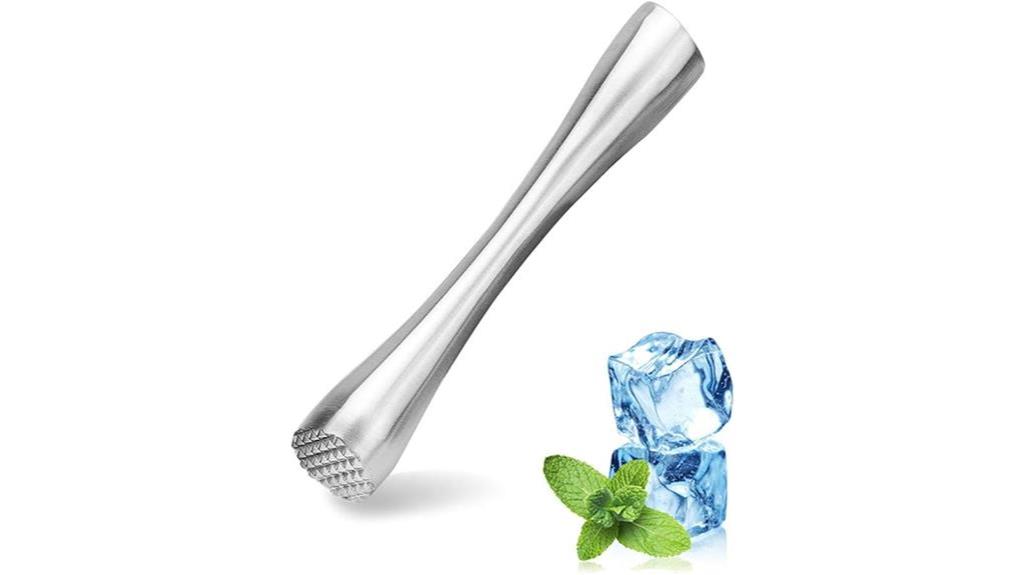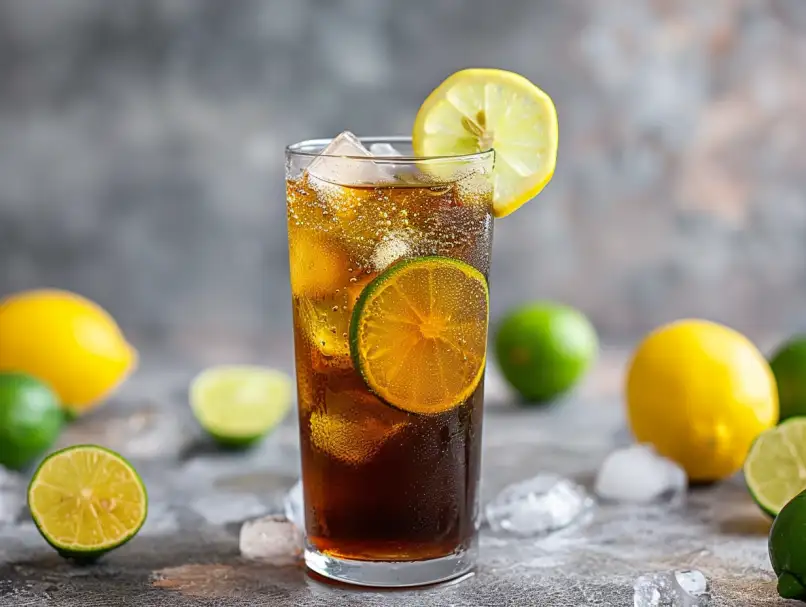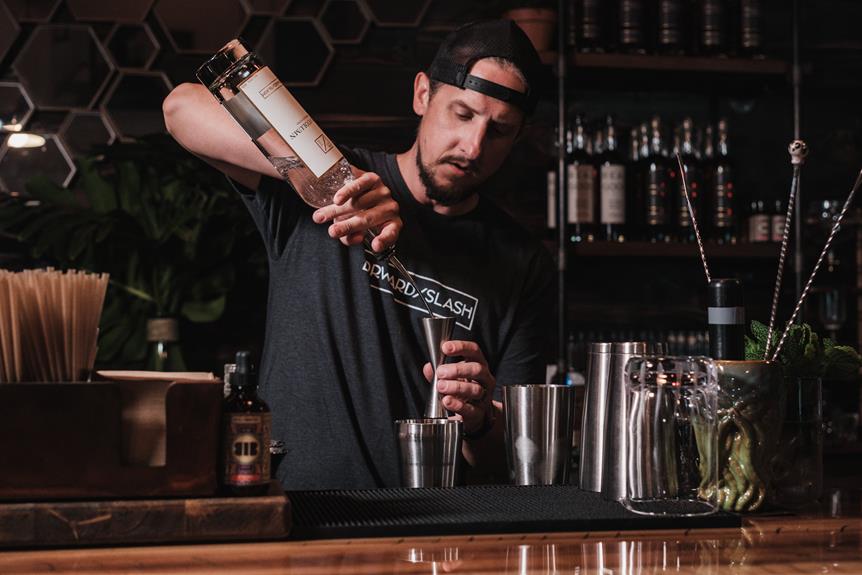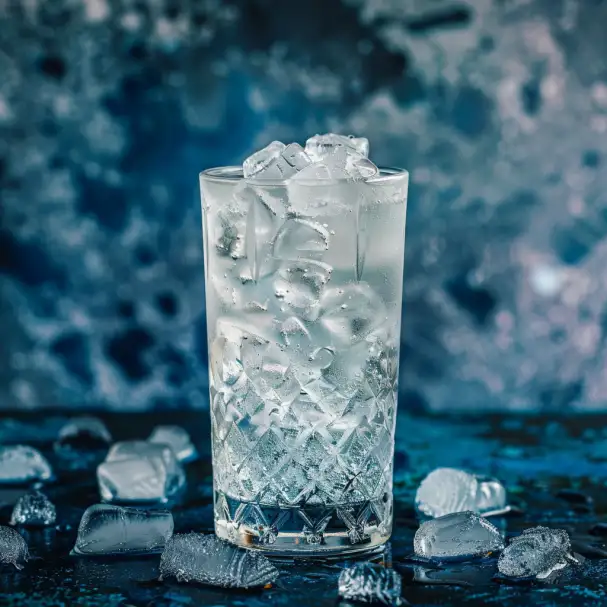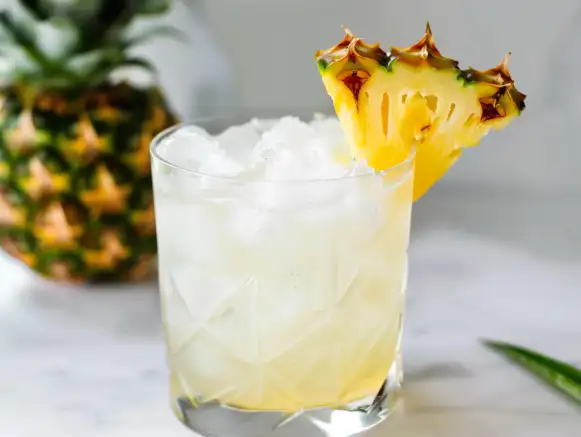A Guide to Layering Cocktails
The craft of making a layered cocktail, with its visually captivating allure, involves a synergy of science and artistry. This process requires an understanding of the specific gravity of different liquids, precision in pouring, and creative flair in selecting a captivating array of colors and flavors.
In the following discussion, we will unravel the secrets behind achieving a perfectly layered cocktail, from the essential tools you’ll need to a step-by-step guide on the layering process. Through this exploration, you’ll uncover the skills necessary to impress your guests at your next social gathering.
Key Takeaways
- Layered cocktails involve stacking liquids based on their density, with heavier ones poured first for stability.
- Essential tools for layered cocktails include a bar spoon, jigger, and a straight-sided glass for clear layer display.
- Selection of liquids requires careful consideration of their density, flavor profiles, and colors for appealing layers.
- Perfect cocktail layers require understanding of specific gravity, gentle pouring techniques, patience, and use of chilled spirits.
Understanding Cocktail Layering Basics
Delving into the art of cocktail layering, it is crucial to understand that the technique lies in the precise stacking of liquids based on their specific densities, a process that requires both skill and creativity. The practice of layering cocktails is steeped in the science of fluid dynamics, with the understanding that different liquids have different densities, and hence, they can either float atop each other or sink based on their respective densities.
Mastering this art form is akin to creating a visually stunning painting, but with layers of flavors and aromas, each contributing to the overall experience of the drink. Each layer can be a different spirit, mixer, or ingredient, carefully chosen not only for their density but also for their taste and how they blend with the other layers.
The key to achieving this perfection lies in precision — precise measurement of ingredients and exact pouring techniques. A steady hand and a keen eye are required, as even a slight misstep can mix the layers, resulting in a muddled instead of a layered cocktail. Therefore, patience, practice, and a deep understanding of the nature of the ingredients are critical to mastering the art of layered cocktails.
Essential Tools for Layered Cocktails
To expertly craft a layered cocktail, a select set of tools is indispensable, each contributing to the precision and creativity involved in this specialized mixology technique. The first and foremost essential tool is the bar spoon. This is more than just a stirring device; it has a long, thin shape that allows for gentle pouring of each liquid layer, creating the desired stratification effect.
A jigger, with its dual-measure sides, is crucial for precise measurement of liquors and mixers, ensuring the right ratio and order of density for each layer. This, in turn, contributes to the visual appeal and taste balance of the drink.
Another fundamental tool is the cocktail glass, specifically a straight-sided one like a highball or a Collins glass. The straight sides allow for a clear and distinct display of the layers.
Choosing the Right Liquids
The selection of appropriate liquids, each with their unique density and flavor profile, is a critical aspect in the artful assembly of a layered cocktail. This is not merely a matter of selecting beverages you enjoy; it is about understanding the interplay of different densities and how they can create distinct, visually appealing layers in your drink.
The first consideration in choosing liquids is their specific gravity or density. Denser liquids will sink, while lighter ones will float. A general rule of thumb is to start with the heaviest liquids like syrups or cream liqueurs, followed by lighter ones such as fruit juices, and finally the least dense, typically high-alcohol spirits.
Flavor, too, is an integral part of the selection process. Even if your layers are visually perfect, a cocktail with clashing flavors will disappoint. Choose liquids that harmonize, complementing each other rather than fighting for dominance.
Consider the color of your liquids as well. Beautifully contrasting colors can enhance the visual appeal of your layered cocktail. Remember, making a layered cocktail is as much a science as it is an art, and the right balance of densities, flavors, and colors can create a visually stunning and deliciously complex drink.
Step-by-Step Layering Process
Mastering the technique of layering involves a step-by-step process that, when executed with precision and creativity, results in a visually striking and flavor-rich cocktail. This process begins with selecting your spirits. The order of layering is determined by the density of each liquid, with the heaviest going in first.
The first step is to fill your glass with ice. This not only chills your cocktail but also creates a stable base for the layers. Next, pour your heaviest spirit slowly over the back of a spoon and onto the ice. This method diffuses the impact of the liquid, helping to keep the layers separate.
Subsequent layers are added in a similar manner, each time using the back of a spoon. It is crucial to pour slowly to maintain distinct layers. As you become more experienced, you can experiment with the order of the layers and the combinations of spirits to create unique and complex flavor profiles.
Tips for Perfect Cocktail Layers
Achieving perfect cocktail layers requires a blend of patience, precision, and a deep understanding of the characteristics of each spirit involved. This process is part art, part science, and it starts with understanding the specific gravity of each ingredient. Denser liquids sink to the bottom, while lighter ones float to the top. The key here is to pour the heaviest spirit first, then gradually add the lighter ones.
The pouring technique is equally crucial. To prevent the layers from mixing, pour each spirit gently over the back of a spoon, just above the previous layer. This reduces the impact and helps maintain the integrity of each layer. However, this technique requires a steady hand and careful control of the pour rate.
Temperature also plays a role. Cold liquids are denser and tend to sink, while warm ones are lighter and tend to float. Therefore, using chilled spirits can enhance the layering effect.
Lastly, be patient. It takes time for the layers to settle and achieve the desired visual effect. With practice, precision, and the right techniques, creating the perfect layered cocktail can become second nature.
Conclusion
In conclusion, the art of crafting a layered cocktail encompasses a fundamental understanding of the principles of density, the use of appropriate tools, and the selection of suitable liquids.
The layering process, when executed with precision, results in a visually appealing and tastefully distinct cocktail.
Perfecting this technique requires practice, creativity, and a keen attention to detail, contributing to the broader field of mixology and enhancing the overall drinking experience.


